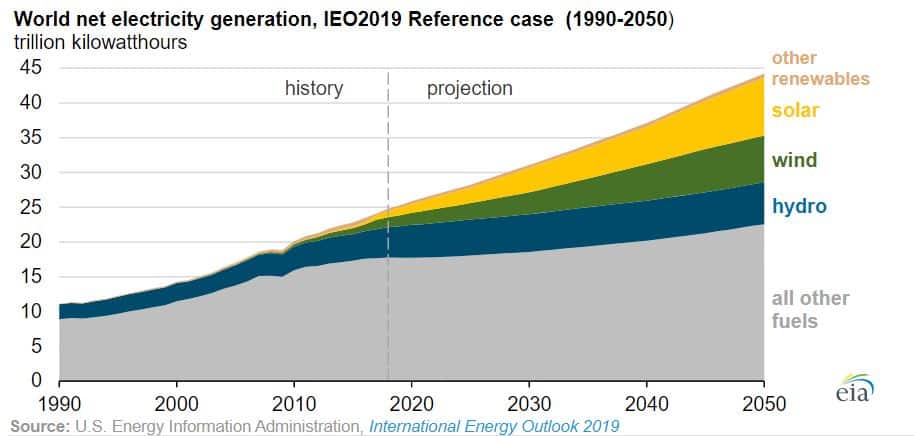Renewables to Supply Half of World’s Electricity by 2050, Led by Solar: EIA

The Energy Information Administration projects that renewables will collectively provide almost 50 percent of global electricity generation by 2050, with solar being the fastest growing technology, according to its latest International Energy Outlook 2019.
Resource availability, renewable policies, regional load growth, and declining technology costs drive EIA’s projected increase in global electricity generation from solar technologies. As more solar power systems have been installed, installation costs have experienced the steepest cost declines of all renewable technologies in recent years, and EIA expects that they will continue to decline as a result of learning-by-doing effects.
According to the agency, solar resources are generally more abundant than wind resources and typically follow very predictable daily and seasonal generation patterns. Resource availability and predictability and relatively simple plant construction technology support favorable economics for solar photovoltaics, the most common solar generation technology in the report’s reference case.
EIA projects that China will see the most growth in solar generation because of its growing demand for electricity, favorable government policies, and competitive technology costs. Growth in solar generation is also projected to be strong in India, European countries in the Organization for Economic Cooperation and Development, and the United States.
The agency also predicts that wind technology adoption has significant growth potential despite capital costs not declining as steeply as solar. Near-term renewable policies in India and OECD Europe will lead to wind generation growth in those areas. In China, wind is among the many sources meeting the country’s increasing demand for electricity.
EnerKnol Pulses like this one are powered by the EnerKnol Platform—the first comprehensive database for real-time energy policy tracking. Sign up for a free trial below for access to key regulatory data and deep industry insights across the energy spectrum.
ACCESS FREE TRIAL